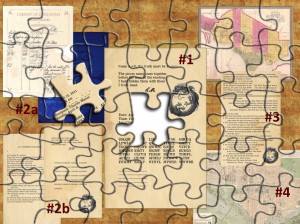This post is guest-authored by Kari Kraus, Associate Professor of English and Information Studies at the University of Maryland, College Park. Professor Kraus gives a free public talk on April 22, 4:30pm, in the Macksey Room (2043) in the Brody Learning Commons at Homewood, followed by a reception. This talk is our last in the Special Collections Research Center series on “The History and Future of Libraries.”
 The last few years have seen a growing interest among humanities scholars in what Matt Ratto has termed critical making: the embodying of ideas and arguments in things as well as words. Much of the definitional and conceptual work around critical making has emerged in fields such as design, interactive technology, and the studio arts.
The last few years have seen a growing interest among humanities scholars in what Matt Ratto has termed critical making: the embodying of ideas and arguments in things as well as words. Much of the definitional and conceptual work around critical making has emerged in fields such as design, interactive technology, and the studio arts.
Critical making might seem to be centered in specific up-and-coming technologies like 3D printing, in new code-savvy communities like maker spaces and Hacker Lab, and in the processes typical of GitHub collaboration. Indeed, some libraries have even begun to accommodate these forms of exploration and research, as an expansion of the traditional library mission.
But critical making can also be defined in relation to a broader spectrum of methodologies and technologies. In this talk I ask what, if anything, makes critical making in the humanities distinctive from other disciplines by considering a range of examples in book history, literature, archaeology, and art conservation. I’ll then show and discuss some of the critical making experiments my collaborators, students, and I have undertaken since 2010, with an emphasis on methodological mash-ups that cut across the arts and humanities, the social sciences, and the design disciplines.
Please come for the lecture, discussion, and reception!
